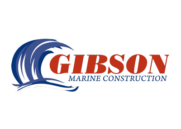Before your weather app begins sending out lightning and water spout alerts is the time to conduct inspections of your dock, deck, boatlift, and seawall. Living on Florida’s Gulf Coast makes for singularly beautiful scenery, but in this case, with great scenery comes great responsibility. You never want to find out after the storm that the integrity of any of your property’s marine structures are breached. The effects of storm winds and tide surges only aggravate the condition. The way to find out that your Florida dock is under stress is not when your foot plunges through one of the boards. It is before.
Hurricane Preparedness details are everywhere: in offices, schools, and free online guides. There are many cautionary tales about repairs in storm aftermath. So with the clock having already started on June 1 for Florida’s official hurricane season, we’ve got a good six months of mild and severe storm systems ahead of us.
With Tropical Storm Colin safely behind us, and with months to go until the season officially ends on November 30, there’s still time to prepare your waterfront property for the season.
Getting Ready for Hurricane Season in Florida
We recommend having all your marine structures, particularly Florida seawalls, professionally inspected.
- If you live in a multi-family building like a condo or townhome development, make sure to attend board meetings to gain assurance that the structures common to the residents are appropriately inspected and repaired.
- If a private home, it may appear that common sense rules the day and dock issues are apparent. But they aren’t. Most Florida docks are built using wood piles and decking. Pile caps are typically connected with stainless or galvanized bolts. In addition to the eventual eroding of these connections, it is most certainly “what lies beneath” that impacts your dock’s integrity. Whether or not your dock is moored in salt water, water itself wears at structures. Add in the ubiquitous marine-boring organisms (whose home you are sharing) and you have a recipe for destruction.
This is why we reiterate that a professional marine inspection is your best bet – your dock’s surface may appear innocent enough, but a complete in- and below-water inspection is key.
Preparing Your Boat Lift
Storing your boat during certain times of the season is standard operation, it is also a good time to make certain the lift is in good repair. Once the boat is off the lift, your storm preparation can entail lowering the cradle on the lift all the way to the bottom. With the cradle in the water it will be more protected from winds and storm surge waves. This effort will support the protection of the lift itself and the dock.
For low-profile installations: protect your boat lift motors, switches, and covers by removing them and storing in a safe, dry place.
For lifts with sealed direct-drive systems: remove the gear unit after lowering the cable down to its lowest point as the cable will free spool back down regardless.
For all lift types: tighten all the nuts and bolts on the lift so you don’t lose any small parts during the storm.
Contact us at (727) 942-3111 for questions about the care and maintenance of these essential structures. It only takes one storm to make a difference.

